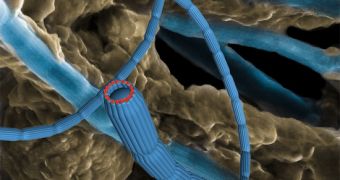Only recently, the news broke that researchers working with the Aarhus University in Denmark succeeded in coming up with an explanation for the electric currents they found to be running in the seabed roughly three years ago.
According to the findings of their investigation, what must be held responsible for the electric currents they measured in the seabed is a type of bacterium that pretty much behaves like living electrical cables.
“Our experiments showed that the electric connections in the seabed must be solid structures built by bacteria,” PhD student Christian Pfeffer said.
As the team of specialists explain, each bacterium is roughly one-centimeter long and its insides contain several insulated wires, whose job is that of conducting the electric current from the bacterium's head all the way to its tail.
Nils Risgaard-Petersen, a researcher presently working with the Aarhus University, made a case of how, “The incredible idea that these bacteria should be electric cables really fell into place when, inside the bacteria, we saw wire-like strings enclosed by a membrane.”
Eurek! Alert reports that these bacteria most likely evolved to double as electrical cables because their natural habitat (i.e. the seabed) more often than not fails to deliver the required amounts of oxygen.
Thus, their being “charged” in this manner allows for a significantly more efficient combustion.
Presently, questions are being raised with respect to how these findings will influence the future of scientific development.
More precisely, scientists are trying to figure out whether or not these bacteria can provide innovative working principles for a new class of electronics.
“On the one hand, it is still very unreal and fantastic. On the other hand, it is also very tangible,” argues Professor Lars Peter Nielsen from the Aarhus University.
Throughout this research, the scientists at the Aarhus University worked closely together with a team of researchers from the University of Southern California, USA.
The results of their investigation can be read in further detail in the scientific journal Nature.

 14 DAY TRIAL //
14 DAY TRIAL //